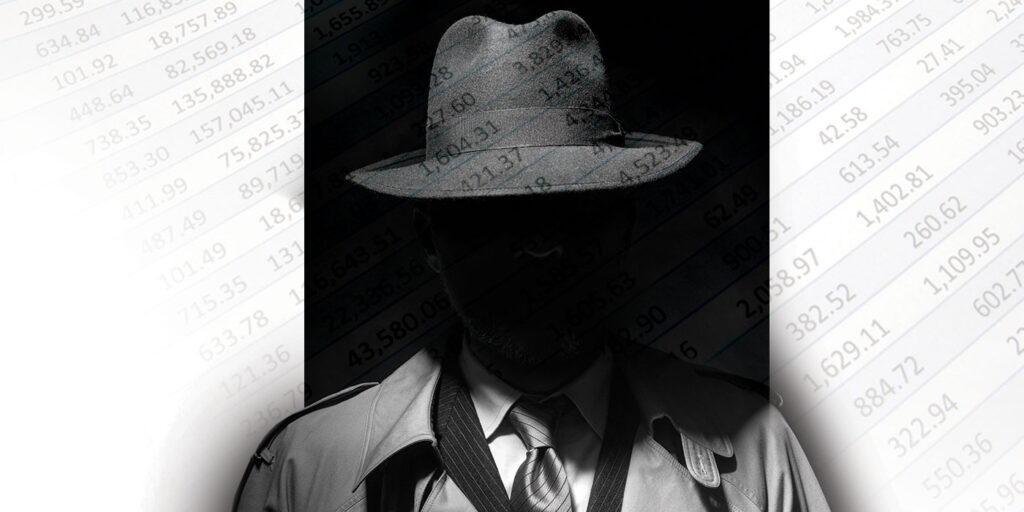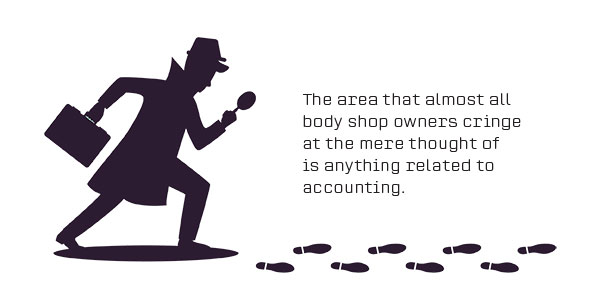This article is the first in a series on accounting and financial management. To view the rest of the series:
Part 2, click here.
Part 3, click here.
The area that almost all body shop owners struggle with (and quite honestly cringe at the mere thought of) is anything related to accounting. A lot of shop owners are former bodymen and painters-turned-owners; consequently, they never learned the art of accounting.
Together, we’re going to take a journey through a series of articles that will connect all the dots and cover all things accounting in a collision repair facility. At the end of this journey, you’ll be an accounting pro!
Understanding Financial Performance
One of the most valuable things to any collision repair business is ownership and management having an accurate understanding of their financial performance. This often starts with organizing all accounting to map or feed into a financial statement. There are many ways to approach this; however, for the purpose of this series, we’ll discuss the benefits to the profitability of the business. In addition, we’ll discuss accrual-based/GAAP vs. cash accounting methodologies while walking business owners and operators through the best and most simplistic approach to moving towards these methodologies.
Mapping Accounts
Incorrect mapping is the single biggest problem that we see in 90% of all body shops. I can almost guarantee if you’re reading this that you have a problem with mapping.
What is mapping? Let’s think about a repair. For ease of explanation, let’s say for every repair order, we have a sale and cost for body labor, paint labor, parts, paint materials and tax. Think of each of those categories as a bucket or file for each sale and expense. In your management system (CCC, Mitchell, etc.), each one of those buckets or files needs to be aligned (also known as “mapped”) to the matching account in your accounting system. Typically, at the end of the month, the sales and costs are exported into the accounting system (Quickbooks, Xero, etc.), where the sales and costs are accounted for. It is crucial to have the costs and expenses set up properly in your management system and exporting to the correct accounts. If this mapping is not set up correctly, then your data is unreliable, and you have no idea what is going on financially in your shop. Reliable data creates multiple benefits to the owner/management:
Understanding individual gross profit categories. Having sales and repair expenses mapped the same way on the profit and loss financial statement (P&L) allows for management to understand each gross profit category (parts, labor, paint and materials, sublet) based on repairs only. This is important for owners, so they can measure themselves against past results, expectations, the industry or budgets.
Easily identify patterns in the financial statement. When this happens, management can look at trends or historical gross profit percentages, which allows it to easily identify pattern drops in gross profit in each category. When everything is lumped into one sales bucket, it makes it impossible to spot mistakes and limits your ability to research errors. When you see a P&L statement and everything is assigned properly, errors are easily identified, and this will allow you to correct the issue(s).
Identifying financial opportunities. Mapping sales and cost of goods sold (COGS) correctly also allows management to recognize financial opportunities much easier. When you see your parts margin fluctuate month over month, you can do the research to pinpoint what is driving the parts gross profit margin. Going into the operating system and running reports will help spot which repair orders are driving the lower parts margin. You may notice that you’re not receiving correct discounts from vendors (which can be corrected), you’re using more LKQ parts than you expected (which drives down margin) or you’re using more aftermarket parts (which increases margin). Maybe your estimator isn’t using your preferred vendors or not checking discounts when ordering parts. In another example, if they notice that the labor margin has dropped, it would be obvious and would direct management to research. It could be that they hired a technician at a higher flat rate or that the detailer is working extra overtime — both of which would lower labor margin. Either way, having the information is beneficial to management.
Tying sales and COGS. Matching sales with costs creates an atmosphere where management has more detailed information. This helps it make better and more informed repair order decisions based on data rather than gut feelings. Owners have so much pressure throughout the month, and their focus must be split all over the shop. This allows them to spend less time working on financial statements or having to look all over for information. It would be very apparent and easy to assess where the profit opportunities are.
Improving profitability. Mapping correctly helps management with its decision making within each category to improve profitability. In the previously mentioned parts example, management could recognize that a vendor is giving lower-than-expected discounts, which would prompt it to meet with the vendor to negotiate a better deal. Or, management could speak to the estimator to train on the importance of using its preferred vendors to increase profits or select the more profitable parts choice. In the labor example above, having that information could lead management to evaluate overtime and/or distribute labor hours more evenly or make sure it’s assigning labor hours based on skill level.
Overhead Expenses
Aside from having the sales and costs of goods sold mapped correctly from the estimating system, having your overhead expenses coded correctly is important as well. Creating specific general ledger accounts for expenses helps categorize expenses into “buckets.” Some examples include:
- Overhead labor — includes admin or front office payroll
- Repairs and maintenance
- Utilities
- Rent/taxes
- Phone
- Travel
- Meals and entertainment
- Insurance
- Shop supplies
- Fuel/vehicle maintenance
- Computers
- Bank fees
There are numerous different accounts that can be created to suit each shop’s needs, but having them is important for management. Typically, overhead expenses are fairly consistent (depending on what accounting methodology is used), so recognizing a spike or dip in an account should be easy.
Choosing an Accounting Methodology
We’ve heard this from our accountant before, but did you really understand what your accountant meant when he or she referred to cash-based accounting or accrual-based accounting? I know many of us probably look at accountants like a deer in the headlights as they talk above our heads — and we do not speak up for fear of looking stupid. Well, fear no more.
There are two accounting routes an owner can use: cash-based accounting and accrual-based accounting. Most collision repair owners use a more complex version of cashed-based accounting. Cash-based accounting is when transactions are recorded only on the actual flow of cash in or out of the business. Revenue is recognized when cash is received from the customer while expenses are recorded as cash is paid. In this industry and depending on what estimating system an operator uses, the sales and expenses for the repair only are transferred into the accounting system. All other expenses are entered as they’re paid directly into the accounting software. This method makes it easy for the business owner to realize his or her cash flow and available cash — important for a business owner to know. However, this method of accounting limits an owner’s ability to understand long-term profitability. In addition, it becomes difficult to create financial reports for lenders or possible investors.
This brings us to accrual-based accounting. Revenue and expenses are recorded as they’re earned, even if the payments haven’t hit an account. For example, when a repair order is “closed,” the sales and expenses (parts, labor, paint and materials, sublet) are recorded at the same time. This allows the owner the ability to study the gross profit on each vehicle. This accounting method also allows owners the ability to correctly account for such costs as insurance, subscriptions, etc., over a period of time rather than one lump sum. In the instance of insurance, the expense is typically a yearly expense. In accrual-based accounting, the expense is divided by 12 months and expensed as such rather than one large amount hitting in one month.
While both accounting methods are used, the one that will show management the overall health of the business would be the accrual-based method. The benefits of realizing gross profit percentages as they’re earned without muddying it with expenses that don’t belong to the sales produced is extremely valuable. Having a cleaner financial statement is imperative if an owner is looking for an investor or needs to present his or her statements to a bank. It also exposes when the business has out-of-pattern expenses and can magnify mistakes easily. The cleaner the information you have available to you as an owner, the better prepared you are to make business decisions such as budgeting and gross profit management up to recognizing the actual value of your company if you’re contemplating selling your business.
Summary
In the coming articles, we’ll learn how to identify leakage (and, subsequently the root cause of the leakage), profit margins and what a monthly review of your financials should look like.
















